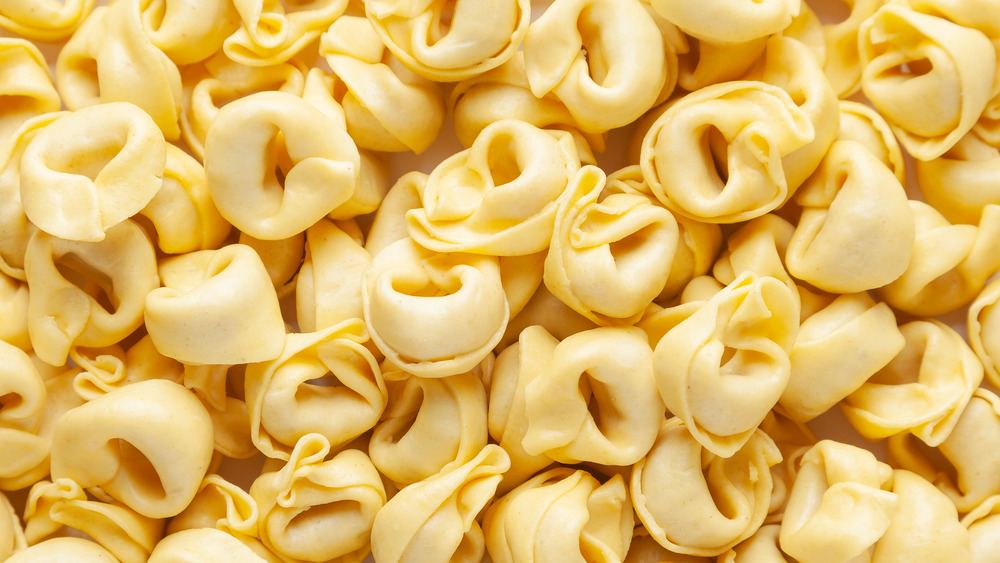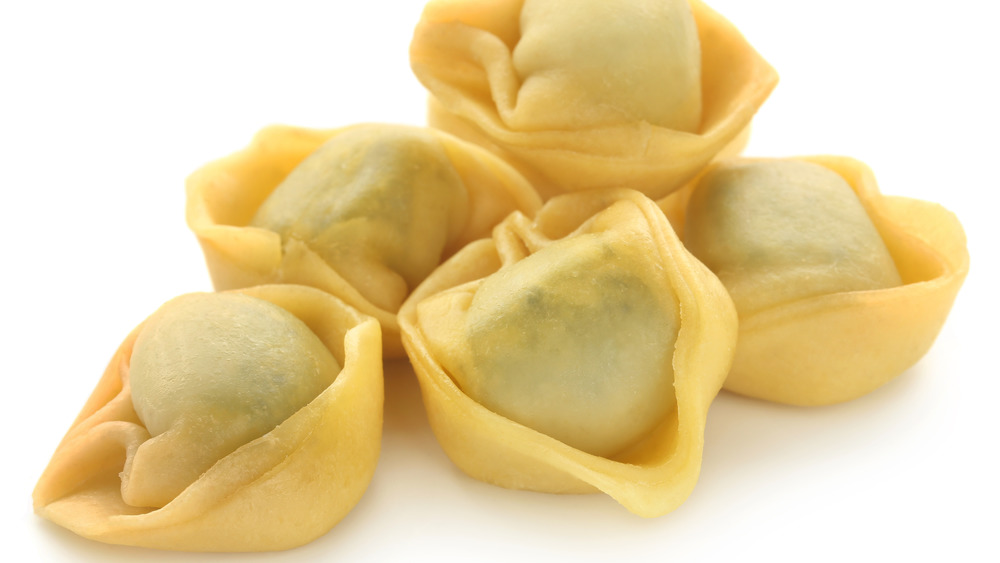The Real Difference Between Tortellini And Tortelloni
Did you know that tortellini and tortelloni are two distinct pasta shapes? Many people conflate the two or simply don't know that the two similarly-named pastas exist separately from one another. True, both the shapes and names are nearly identical. Usually purchased frozen or perhaps ordered as a side from a pizzeria, the small, filled pastas aren't the most celebrated (or written about) stalwarts of Italian cuisine. They have a storied history, a fabled name, and let's be honest: They're absolutely delicious.
Tortellini is the plural form of tortellino, whereas the singular form of tortelloni is tortellono. Both pastas are made from a standard egg and flour pasta dough and are essentially dumplings. Tortellini are a "small, ring-shaped filled pasta," according to Great Italian Chefs, and Bon Appétit notes that it's about the size of a thimble. It comes from the Bologna region of Emilia Romagna. Taste of Italy notes that tortellini are usually stuffed with meat and served in a broth, or "brodo."
According to NPR, the name of the pasta originates from a legend about a goddess: "Venus ... once stayed at the local tavern in the town of Castelfranco Emilia" and that an "innkeeper spied on his guest through the keyhole of her room and got a partial glimpse of her. Struck by what he saw, he rushed to his kitchen, rolled out a sheet or fresh egg pasta and invented a shape inspired by Venus's navel." While definitely problematic and certainly illegal, the tale provides an interesting back-story.
What are tortelloni?
NPR also states that the "first known tortellino recipe" dates back to 1570 and that the pasta is so cherished that there's an app in Modena to "safeguard the art of making tortellino, its history, and the role it plays in local culture." The "official tortellino recipe" was even registered with the Chamber of Commerce in Bologna in 1974.
Tortelloni, on the other hand, is typically vegetarian, primarily made with cheeses, herbs, and vegetables, and traditionally are much larger than tortellini. Their flavor is milder — much less pronounced and intense than the usually meat-based tortellini. Tortelloni are usually served with a simple, rather light sauce, such as sage and butter, according to Taste of Italy. They too hail from Northern Italy and have roots in Emilia-Romagna and Modena. Of course, while the traditionally common pairings are recommended and those specifications were strictly adhered to historically, there's certainly no reason now that you can't have some fun with mixing-and-matching in 2021. Vegetarian tortellini? Small tortelloni?
Some pairings are cold applications — à la pasta salad — or using tortellini/tortelloni in Italian wedding soups. Either pasta is stellar when served with a classic marinara or a rich cream sauce. Tortelloni also pair beautifully with verdant, bright spring vegetables like peas, asparagus, or fava beans, while the standard application for tortellini is really quite unbeatable: a pure, clarified broth is the perfect pair for the umami, meat-laden pasta. The only welcome addition might be some fresh shaving of Parmigiano Reggiano across the top.
Mangia!

